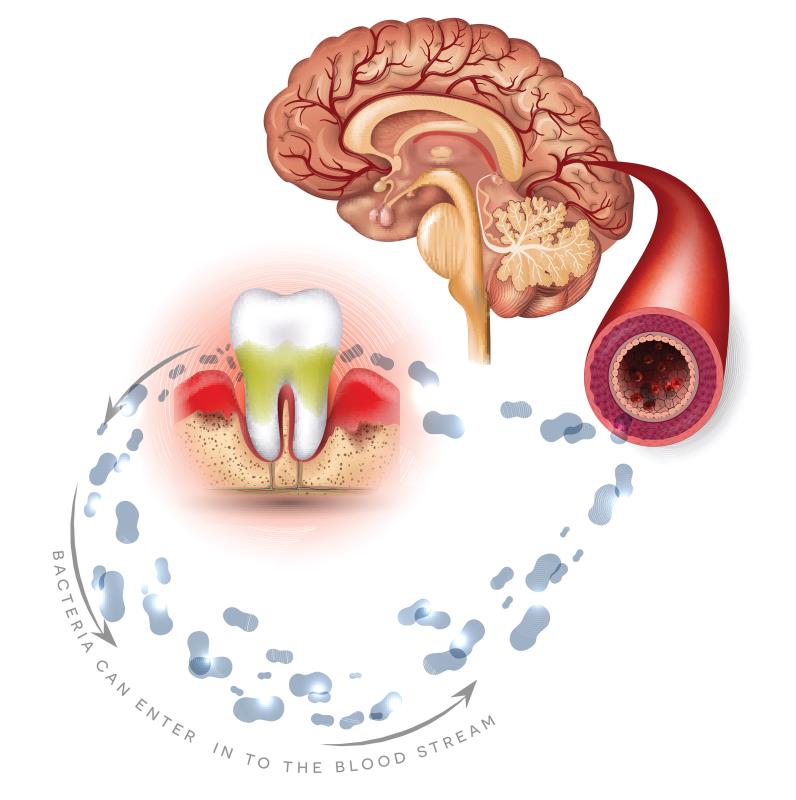
Two studies presented at ISC 2020 reflected the association between gum or periodontal disease and a higher risk of stroke, underscoring the potential role of gum treatment for stroke prevention.
“[I]nflammation appears to play a major role in the development and worsening of atherosclerosis or ‘hardening’ of blood vessels. [Therefore,] we investigated if gum disease is associated with blockages in brain vessels and strokes caused by atherosclerosis of the brain vessels,” said Dr Souvik Sen from the University of South Carolina School of Medicine in Columbia, South Carolina, US, who authored both studies.
In a cross-sectional study, 265 consecutive patients (mean age 64 years, 56 percent male, 33 percent with periodontal disease) who have had a stroke (20 percent caused by large-artery atherothrombosis) were evaluated. [ISC 2020, abstract 85]
The incidence of stroke due to posterior circulation disease was threefold higher among individuals with vs without periodontal disease (12 percent vs 5 percent; crude odds ratio [cOR], 3.0, 95 percent confidence interval [CI], 1.1–7.9; p=0.03). This association was sustained after adjusting for confounding factors* (adjusted OR [adjOR], 3.1, 95 percent CI, 1.04–9.1; p=0.004).
Moreover, a significantly higher risk of stroke due to intracranial atherosclerosis (ICAS) was observed among participants with vs without periodontal disease (20 percent vs 8 percent; cOR, 2.6, 95 percent CI, 1.3–5.6; p=0.01), which persisted after adjusting for the same covariates (adjOR, 2.6, 95 percent CI, 1.1–5.8; p=0.004).
No stroke history
In another study, researchers evaluated the presence of intracranial arterial blockage in 1,145 individuals (mean age 76 years, 55 percent female) from the DARIC** study who had not experienced a stroke. Of these, 10 percent had ≥50 percent ICAS, suggesting severe arterial blockage, while the remaining 90 percent had 0–50 percent ICAS. [ISC 2020, abstract 136]
The odds of having ≥50 percent ICAS were substantially higher among subjects with vs without gingivitis (cOR, 2.1, 95 percent CI, 1.2–3.8; p=0.015), which was sustained even after adjusting for confounding variables*** (adjOR, 2.4, 95 percent CI, 1.3–4.5; p=0.006). These suggest that individuals with inflamed gums had twice the risk of having moderate-to-severe arterial narrowing in the brain due to plaque buildup, thus increasing the likelihood of developing a stroke, noted Sen.
Although both studies did not evaluate causality, the findings highlight the importance of identifying gum disease as a potential underlying factor in stroke development and/or progression. “It is important for clinicians to … address gum disease … [G]ingivitis is reversible. [Therefore,] future studies are needed to determine if treatment of gingivitis can prevent the development and progression of ICAS [and consequently reduce] the risk of stroke,” said Sen.